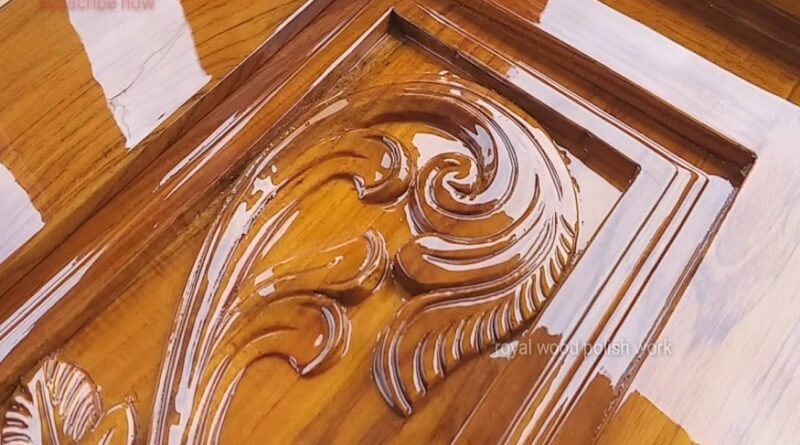The Ultimate Guide to Finishing Different Surfaces: Techniques and Tips
Ever looked at a piece of old furniture or even the room wall and thought how much better off it would be changed? All the magic goes beyond the splash of paint to the understanding of the material and choosing the right finishing technique that will bring out its best. Whether you are a seasoned DIY person or a curious first-timer, let us help you with the tricks to confidently approach surfaces—from the sparkle of newly painted metal railings to the warmth of wood polished into a table.
Common Finishing Techniques
- Painting is the most universal technique, offering the widest possibilities in terms of colour, texture, and protection. The latter aspects of metal require special primers and paint with assured adhesion and durability in weathering.
- Polishing involves providing a smooth and high-gloss surface to the component using abrasive compounds or buffing wheels. It’s perfect for wood polishing to show through its natural grain and beauty.
- Staining introduces colour onto the surface without obscuring the natural grain of the wood. Excellent when trying to highlight the natural characteristics of wood, it gives a deep, warm appearance to the wood.
- Varnishing is a coat applied over finishes to protect them against the infiltration of moisture and their wear and tear. It is normally carried out on wood finishes but can also be applied on concrete or any porous surface.
- Sealing is mainly done for resistance to either moisture or staining. This is crucial for porous surfaces like wood and concrete before applying paint or other finishes.
Surface-Specific Techniques and Helpful Hints
Now that we have covered the general methods, let’s delve into the specific strategies for different surfaces:
Metallic Art:
Prep is Key
One important preparatory step before painting metal is removing rust and cleaning it out. Use a wire brush or a sanding machine to clear rust or loose paint.
Prime Time
Always use a primer specifically designed for metal. This ensures better paint adhesion and protects the metal from corrosion.
Brush is important
Use a good painting brush for metal-geared paint. Apply thin even coats using smooth strokes, and let dry before recoating.
Wood Polishing
Sanding
As important as painting metal is, to the rust repair process, sanding is like that to the wood polishing process. The coarse-grit paper removes scratches and other imperfections; fine grit finishes the job to a smooth surface.
Grain Filling
A really classy finish can be achieved with grain filling. In this case, open grain in your wood is filled to give a level ground for the finish.
The Power of Polish
Choose a wood polish based on the desired finish. Opt for cream polishes for a subtle sheen or wax polishes for a more high-gloss finish. Apply the polish in a circular motion with a soft cloth, buffing it to a gleaming finish.
Advanced Tips and Considerations
Distressing
This process creates a vintage or old look on wood surfaces using various paint removal methods—for example, sanding back layers of paint to the wooden substrate or using a scraping tool to make artificial wear marks.
Faux Finishes
If you have longed for marble countertops, you can achieve that with lifelike imitations of stone, wood grains, and even metallic finishes without the high cost when you use faux finishing techniques.
Remember, health is paramount! Use the paints and chemicals with safety gear where necessary like gloves, eye protection, and a respirator. Work in the open or in a properly ventilated area and dispose of the paint and cleaning material well.
Embrace the imperfections
Sometimes, minor flaws in a hand-finished work give it character. Sometimes it is about perfection; strive for a finish that complements your project and reflects your own style.
Consider a Professional Service
Overloaded? Try a Wood Painting Service if the thought of DIY surface finishing is daunting. Wood painting services can expertly restore or refinish your furniture, cabinets, or even floors. They possess the knowledge, tools, and experience to deliver a flawless finish that will enhance the value and beauty of your home.
Surface finishing professional services offer several benefits:
- Professionals have specialized knowledge of various surfaces and the finishing treatments applied to them. Professionals can put forward the best approach in terms of needs or preferences.
- They have earned experience handling complex projects efficiently and producing high-quality results.
- Pros can get the job done quickly, saving your valuable time compared to a DIY.
- Their expertise and years of experience ensure flawless finishing, with no need for multiple attempts or touch-ups.
- Many professional services come with guarantees, which allow you to feel better and have more assurance relative to what you get.
- Custom finishes can be done to reflect the color or more along your available décor in your house.
Proper technique, good material, and a bit of creativity—your vision can come to life. Be it metal painting or wood polishing that involves advanced techniques, be sure to follow the safety precautions and then plan; and finally, enjoy the fun part of creating. So go ahead. Set free the DIY enthusiast within you and embark on a mission to complete surfaces.

